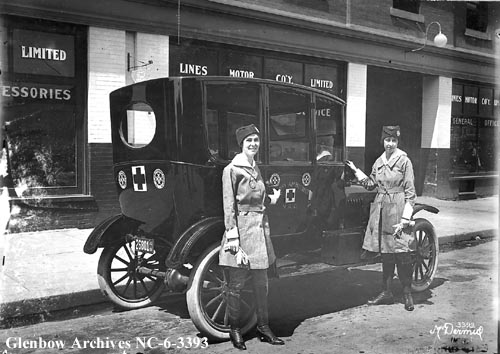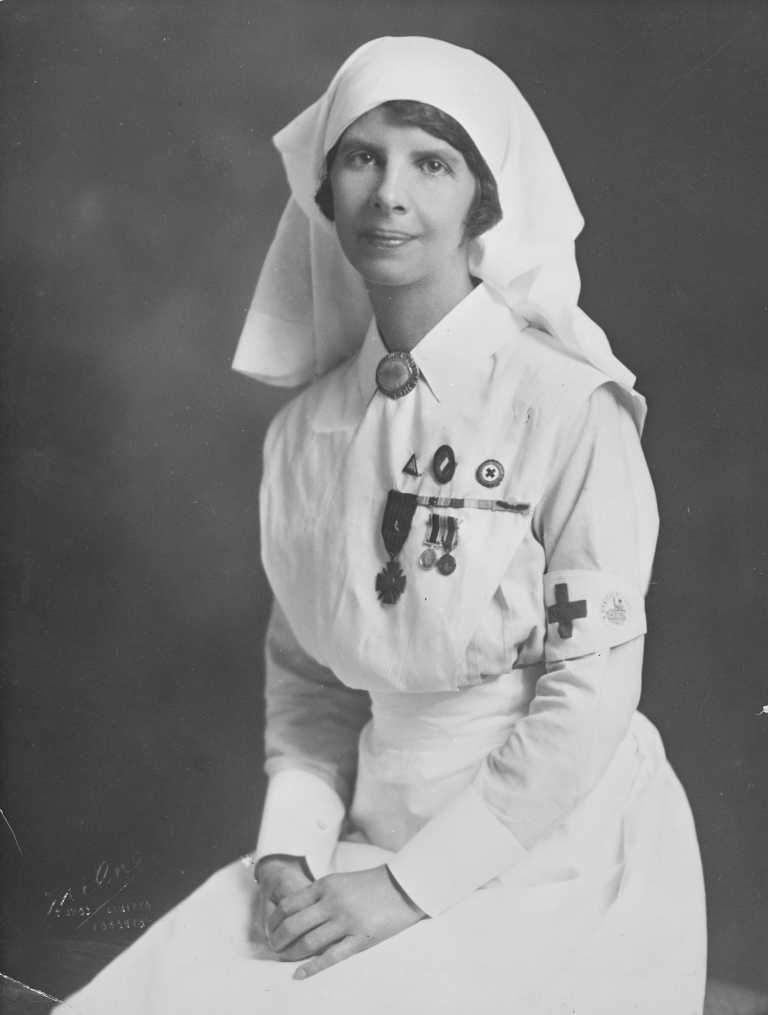Halloween is tomorrow. I wanted to take this opportunity to look back at the different ways Halloween has been celebrated in Alberta since the late nineteenth century. Early newspapers offer a fascinating window into how we celebrated Halloween, ranging from private and public parties, to ‘trick-or-treating’ and pranking.

Like most holidays, Halloween is a fusion of ancient and modern traditions. Halloween traces its origins back thousands of years to the Celtic festival of Samhain (October 31 – November 1), which marked the start of the Celtic New Year. It was believed that the boundary between the physical and supernatural worlds broke down during Samhain, and spirits, ghosts and fairies could cross over and walk the earth. The festival was Christianized in the ninth century becoming ‘All Hallows Day’ (November 1, now generally called ‘All Saints Day’). Though Christianized, many of the customs associated with Samhain endured, particularly among the Celtic peoples of Ireland, Scotland and Wales. These cultural traditions were brought to North America by waves of immigrants and evolved into what we know today as Halloween.
From the start Halloween in Alberta was marked by “general nuisance” and “sundry pranks,” such as soaping windows, unhinging gates, or moving property. Reporting on Halloween in Innisfail in 1897, the Calgary Herald noted that “several small buildings took the usual trot around town during the evening.” Generally speaking, these items were left where they could be found – the goal was to create a nuisance, not to steal. Occasionally, however, people were left searching for their property the next day. In 1925, a farmer posted a notice in the Red Deer News requesting that the “Halloween revellers” who removed his garden gate “kindly return the same forthwith or indicate…where they have taken it.” Carriages and cars were also popular targets for Halloween pranksters, who enjoyed taking them for a joyride. Such tricks occasionally had unforeseen consequences: One prankster in Rockyford, for example, got more than he bargained for in 1919 when he took a car for a joyride, only to find that there was a baby asleep in the backseat. After a frantic half-hour of searching, the car was found abandoned at the town’s bank, and the baby was found “fast asleep as if nothing had happened at all.”

The boundaries of acceptable behaviour on Halloween were quite clear – pranks that could be rectified with minimal expense or effort were considered harmless fun, but any destruction of property was strongly condemned. The Edmonton Bulletin commented in 1912 that Halloween was a “recognized night of immunity from punishment” for pranksters, provided that “no serious depredations were committed.” Similar comments from newspapers across Alberta suggest a broad tolerance for relatively benign pranks, though it is also clear that this tolerance had limits. Halloween in Edmonton in 1917, for example, was marked by significant destruction of property – Chinese laundries were targeted for vandalism, sidewalks were torn up, and many fences and outbuildings were heavily damaged or destroyed. The Edmonton Bulletin expressed indignation at the night’s events, denouncing revellers as “youthful marauders” and commenting that their actions had “quite passed the limits of joking.” The Raymond Recorder struck a similar tone in a 1932 editorial pleading for a “Sane Halloween.” “Why is there any amusement in destroying private property?” asked the clearly frustrated editor, who issued a rather ominous warning to potential troublemakers: “any person who is the victim of meddlesome pranks on Halloween night…is quite within the law in protecting his property, and if anyone is hurt, the trespasser is entirely at fault.”
It is also clear from newspaper coverage that different standards of behaviour were expected from boys and girls. Minor social disorder on Halloween was clearly viewed as a by-product of youthful exuberance and a rite of passage –for boys. Most newspapers were very clear that Halloween pranks had been carried out by “the boys of the town” or “the male portion of the population.” In 1914, the Didsbury Pioneer urged the “boys and girls” to “conduct themselves properly in their fun and not damage other peoples’ property,” but such statements explicitly suggesting that girls participated in pranking are very rare. The extent to which girls actually took part in Halloween disorder is unclear, but such behaviour would clearly have not been socially acceptable.

For those Albertans who wanted no part in pranking, Halloween offered many other opportunities for celebration. Archival photographs and newspaper stories reveal that private costume parties have been a part of Halloween fun in Alberta since the late nineteenth century. Similarly, a wide range of clubs and societies hosted costume parties for their members. The Edmonton Caledonian Society pointed with satisfaction to the Celtic roots of the holiday, inviting its members in 1908 to “celebrate this old-fashioned Scottish festival” (as late as 1919, the city’s Scots were promoting Halloween as a “peculiarly Scotch night”). During World War One, Halloween balls doubled as fundraisers for causes associated with the war effort, such as the Red Cross and the Returned Soldiers’ Fund. Such events offered people a respectable way to celebrate Halloween, free from any association with pranking or social disorder.
The most famous activity associated with Halloween, of course, is ‘trick-or-treating.’ The practice of going door-to-door in costume asking for food may echo cultural traditions that date back hundreds of years to the British Isles. The use of the term ‘trick-or-treat’ – and the implied promise that giving youth a treat will stop them from taking your carriage for a joyride – appears to be a North American phenomenon. “The kids are expected to be out in full forces on their quest for Halloween treats” remarked the Western Globe in 1938, “and the old cry of ‘Trick or Treat’ will be the password.” The popularity of ‘trick-or-treating’ took off after World War Two, and the annual custom anchored itself as the most characteristic practise associated with Halloween night.
From the ancient customs of Celtic Britain to the practise of dressing up and collecting candy from strangers, Halloween has undergone a significant transformation over the past several thousand years. However you choose to observe the day, have a safe and happy Halloween!
Written by: Allan Rowe, Historic Places Research Officer.
Sources and Further Reading
Peel’s Prairie Provinces, Digitized Newspaper Collection. http://peel.library.ualberta.ca/newspapers/
Rogers, Nicholas. Halloween: From Pagan Ritual to Party Night. New York: Oxford University Press, 2002.
Santino, Jack. “Halloween in America: Contemporary Customs and Performances.” Western Folklore 42,1 (January 1983), 1-20.






































